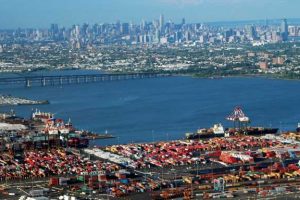America’s Busiest Cities for International Trade

Trade has become an increasingly important part of the U.S. economy over the past several decades, rising from 10.8% of the nation’s GDP in 1970 to 23.4% as of 2020. America’s ports serve as the foundation of the country’s growing international trade sector, handling over 95% of all cargo entering the United States.
Ports are transportation hubs that connect international marine highways to domestic trade routes, and they are often a major source of jobs and revenue in the areas they are located. The busiest ports in America act as key economic infrastructure and can also play an important role in national defense and emergency preparedness. (This is the most import dependent economy in the world.)
To determine America’s busiest ports, 24/7 Wall St. reviewed data from the U.S. Army Corps of Engineers Waterborne Commerce Statistics Center, compiled by the American Association of Port Authorities. U.S. ports were ranked based on the total amount of incoming and outgoing cargo volume in 2019. All other data came from the American Association of Port Authorities.
Petroleum is America’s principal export, accounting for 12.7% of export good value in 2020. As a result, many of the country’s busiest ports are located in the Gulf Coast states, which – together with federal offshore production in the Gulf of Mexico – account for 70.5% of total U.S. crude oil production. As of 2019, 12 of the 25 busiest ports in the United States were situated in the Gulf Coast. (These are 15 countries that control the world’s oil.)
While most of America’s busiest ports engage in both foreign and domestic trade, some inland ports along the country’s major shipping waterways deal exclusively in domestic goods. Three of the 25 busiest U.S. ports – the Port of Huntington Tri-State, the Ports of Cincinnati and Northern Kentucky, and the Port of Metropolitan St. Louis – are inland ports that facilitate domestic trade along the Ohio and Mississippi Rivers.
Click here to see the America’s busiest cities for international trade
Source: Read Full Article
